Planning worship?
Check out our sister site, ZeteoSearch.org,
for 20+ additional resources related to your search.
- |
User Links
Person Results
‹ Return to hymnal
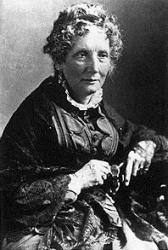
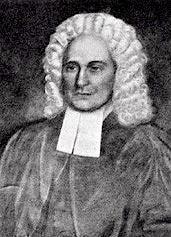
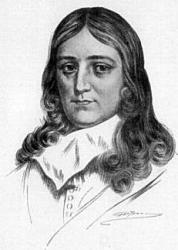
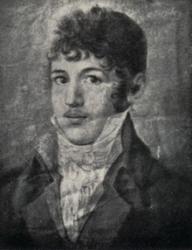

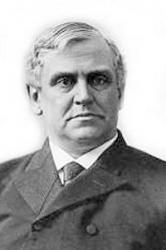
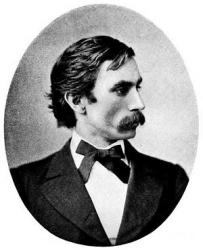
Export as CSV
Harriet Beecher Stowe

1811 - 1896 Person Name: Mrs. H. B. Stowe Hymnal Number: 36 Author of "Still, still with Thee, when purple morning breaketh" in Hymns of Worship and Service (15th ed.) Stowe, Harriet, née Beecher, daughter of the Rev. Lyman Beecher, D.D., was born at Litchfield, Connecticut, June 15, 1812. In 1832, her father having been appointed President of Lane Seminary, Cincinnati, Ohio, she removed therewith the family; and in 1833 was married to the Rev. Calvin E. Stowe, D.D., Professor of Languages and Biblical Literature in the same Institution. Her high reputation as an author is well known; and the immense success of Uncle Tom's Cabin, which first appeared in The National Era, in 1852, ensures her a lasting reputation. She has also written other well-known works. Three of her hymns appeared in the Plymouth Collection, edited by her brother, H. W. Beecher, in 1855:—
1. Still, still with Thee, when purple morning breaketh. Resting in God.
2. That mystic word of Thine, 0 sovereign Lord. Abiding in Jesus.
3. When winds are raging o'er the upper ocean. Peace.
Another hymn by Mrs. Stowe, "How beautiful, said he of old" (The Gospel Ministry), is No. 231 in the Boston Hymns of the Spirit, 1864. Her poetic pieces were published in her Religious Poems, 1867; and from a poem therein the hymn, "Knocking, knocking, who is there?" (Christ knocking), in Sankey's Sacred Songs and Solos is adapted. [Rev. F. M. Bird, M.A.]
-- John Julian, Dictionary of Hymnology (1907)
Harriet Beecher Stowe
James G. Small
1817 - 1888 Person Name: J. G. Small Hymnal Number: 234 Author of "I've found a Friend; O, such a Friend!" in Hymns of Worship and Service (15th ed.) Small, James Grindly, son of George Small, J.P. of Edinburgh, was born in that city in 1817. He was educated at the High School, and the University of Edinburgh. He studied divinity under Dr. Chalmers, and in 1843 he joined the Free Church of Scotland. In 1847 he became the minister of the Free Church at Bervie, near Montrose. He died at Renfrew, Feb. 11, 1888. His poetical works were (1l) The Highlands and other Poems, 1843, 3rd ed. 1852; (2) Songs of the Vineyard in Days of Gloom and Sadness, 1846 ; (3) Hymns for Youthful Voices, 1859; (4) Psalms and Sacred Songs, 1866. His well-known hymn "I've found a Friend; oh such a Friend" (Jesus, the Friend), appeared in his Psalms & Sacred Songs, 1866. It is found in I. D. Sankey's Sacred Songs and Solos, 1878, and others.
--John Julian, Dictionary of Hymnology, Appendix, Part II (1907)
James G. Small
Mrs. Harry Coghill
1836 - 1907 Person Name: A. L. Coghill Hymnal Number: 388 Author of "Work for the night is coming" in Hymns of Worship and Service (15th ed.) Coghill, Annie Louisa, née Walker, daughter of Robert Walker, was born at Kiddermore, Staffordshire, in 1836, and married Harry Coghill in 1884. During a residence for some time in Canada several of her poetical pieces were printed in the Canadian newspapers. These were gathered together and published c. 1859 in her Leaves from the Backwoods. In addition to novels, plays for children, and magazine work, she edited the Autobiography and Letters of her cousin, Mrs. Oliphant, in 1898. Her popular hymn,"Work, for the night is coming," p. 317, ii., was written in Canada in 1854, and published in a Canadian newspaper, from which it passed, without any acknowledgement of the authorship, into Ira D. Sankey's Sacred Songs and Solos. Authorized text in her Oak and Maple, 1890, p. 17.
--John Julian, Dictionary of Hymnology, New Supplement (1907)
======================
[See also: http://biographi.ca/en/bio.php?id_nbr=7126]
Mrs. Harry Coghill
Samuel Davies

1723 - 1761 Person Name: S. Davies Hymnal Number: 262 Author of "Lord, I am Thine, entirely Thine" in Hymns of Worship and Service (15th ed.) Davies, Samuel., M.A., born near Summit Ridge, Newcastle, Delaware, America, Nov. 3, 1723, and educated under the Rev. Samuel Blair, of Chester County, Pennsylvania, through the pecuniary assistance of the Rev. William Robinson, a Presbyterian Minister of New Brunswick. In 1745 he was licensed by the Presbytery of Newcastle as a probationer for the ministry, and undertook duty in Virginia, in 1747. After visiting England in 1753, on behalf of the New Jersey College, and having received the degree of M.A., he was appointed President of New Jersey Presbyterian College, Princeton, in succession to Jonathan Edwards. He died Feb. 4, 1761, at the early age of 37. His manuscripts were entrusted to Dr. T. Gibbons, who published therefrom 5 volumes of Sermons. In 1851 the Sermons were republished in 3 volumes, including a Memoir by the Rev. A. Barnes. His hymns, 10 in all, were given by Dr. Gibbons in his Hymns adapted to Divine Worship, 1769. As a hymnwriter he followed the lines laid down by Watts, and his verses are solid, but somewhat dry and heavy. Those of his hymns which are still retained in common use are:—
1. Eternal Spirit, Source of Light. Influences of the Holy Spirit implored. From Dr. Gibbons's Hymns, &c, 1769, Book. ii., No. 29, this passed into several of the older collections. In later works it is more frequently found in the American hymnals than those of Great Britain. It is in 4 stanzas of 6 lines, as in Dr. Hatfield's Church Hymnbook, N. Y., 1872, and the Leeds Hymnbook, 1853.
2. Great God of wonders, all Thy ways. The Pardoning God. This is one of the most, if not the most, popular of the author's hymns both in Great Britain and America. It has appeared in more than one hundred hymnbooks in England alone, sometimes in full (5 stanzas of 6 lines), and at other times abbreviated, as in Spurgeon's 0ur Own Hymn Book 1866; the Baptist Hymnal, 1879, &c. Its 1st publication was in Dr. Gibbons's Hymns, &c, 1769, Book i., No. 59.
3. How great, how terrible that God. The Judgment. In Gibbons, No. 37 of Book. i., in 7 stanzas of 4 lines.
4. Jesus, how precious is Thy name. Jesus the Prophet, Priest, and King. Is No. 31 of Bk. ii. in Gibbons, in 6 stanzas of 6 lines. It was very popular with the older compilers, as Ash and Evans, Rippon, Bickersteth, and others in Great Britain, and also in America; but in modern collections it is rarely found. It is worthy of notice.
5. Lord, I am Thine, entirely Thine. Holy Communion. In Gibbons this is No. 28 of Book. ii., in 7 stanzas of 4 lines. It is very popular in America, but unknown to most English hymnals. In all editions of Rippon's Selections 1787-1844, it is given in 2 stanzas as "Lord, am I Thine, entirely Thine?" The hymn, "While to Thy table I repair," in the Andover Sabbath Hymnbook , 1858, is compiled from this hymn.
6. What strange perplexities arise. Self-Examination. This hymn is equal to No. 5 in American popularity, and exceeds it in Great Britain. In Dr. Hatfield's Church Hymnbook, N.Y., 1872, it is abbreviated and slightly altered. Full text in 6 stanzas of 4 lines is in Spurgeon's Our Own Hymn Book , 1866. It was first published in Gibbons' Hymns, &c, 1769.
7. While o'er our guilty land, 0 Lord. Fast Day. This hymn, besides appearing in its original form in some collections, and with abbreviations in others, is also the source of "On Thee, our Guardian God, we call," stanza iv. of the original given in a few American collections; and of the same arrangement of stanzas, "On Thee we call, 0 Lord, our God," in the Andover Sabbath Hymn Book, 1858, and others. The original in Gibbons is Book i., No. 56, in 8 stanzas of 4 lines.
The remaining hymns by Davies have failed to attain a position in the hymnbooks either of Great Britain or America. [Rev. F. M. Bird, M.A.]
-- John Julian, Dictionary of Hymnology (1907)
Samuel Davies
John Milton

1608 - 1674 Person Name: J. Milton Hymnal Number: 410 Author of "The Lord will come and not be slow" in Hymns of Worship and Service (15th ed.) Milton, John, was born in London, Dec. 9, 1608, and died there Nov. 8, 1674. His poetical excellences and his literary fame are matters apart from hymnology, and are fully dealt with in numerous memoirs. His influence on English hymn-writing has been very slight, his 19 versions of various Psalms having lain for the most part unused by hymnal compilers. The dates of his paraphrases are:—
Ps. cxiv. and cxxxvi., 1623, when he was 15 years of ago. These were given in his Poems in English and Latin 1645.
Ps. lxxx.-lxxxviii., written in 1648, and published as Nine Psalmes done into Metre, 1645.
Ps. i., 1653; ii., “Done August 8, 1653;" iii., Aug. 9, 1653; iv. Aug. 10, 1653; v., Aug. 12, 1653; vi., Aug. 13, 1653; vii.Aug. 14, 1653; viii., Aug. 14, 1653.
These 19 versions were all included in the 2nd ed. of his Poems in English and Latin, 1673. From these, mainly in the form of centos, the following have come into common use:—
1. Cause us to see Thy goodness, Lord. Ps. lxxxv.
2. Defend the poor and desolate. Ps. lxxxii.
3. God in the great assembly stands. Ps. lxxxii.
4. How lovely are Thy dwellings fair. Ps. lxxxiv. From this, "They pass refreshed the thirsty vale," is taken.
5. Let us with a gladsome [joyful] mind. Ps. cxxxvi.
6. O let us with a joyful mind. Ps. cxxxvi.
7. The Lord will come and not be slow. Ps. lxxxv.
Of these centos Nos. 4 and 5 are in extensive use. The rest are mostly in Unitarian collections. There are also centos from his hymn on the Nativity, "This is the month, and this the happy morn" (q.v.).
--John Julian, Dictionary of Hymnology (1907)
John Milton
César Malan

1787 - 1864 Person Name: H. A. C. Malan Hymnal Number: 441 Author of "It is not death to die" in Hymns of Worship and Service (15th ed.) Rv Henri Abraham Cesar Malan, 1787-1864. Born in Geneva, Switzerland, into a bourgeois family that moved to Switzerland to escape religious persecution during the French Revolution, he attended the university in Marseilles, France, intending to become a businessman. Although having some grounding in religious faith by his mother, he decided to attend the Academy at Geneva (founded by Calvin) in preparation for ministry. He was ordained in 1810, after being appointed a college master (teaching Latin) in 1809. Malan was in accord with the National Church of Geneva as a Unitarian, but the Reveil Movement caused him to become a dissident (evangelical) instead of a proponent of the Reformed Church (believing works, not faith, was what mattered). In 1811 he married (wife’s name not found). They had at least two children (one son was Solomon, referenced below). From 1813 on Malan slowly became an evangelical, after being given an understanding of true salvation through grace (not works) in 1816 by two German Lutherans from Geneva. He became saved upon this realization and was so changed that he burned his prized collection of classical authors and manuscripts. In 1817 he preached around Geneva, and one sermon in particular, “Man only justified by faith alone” created a firestorm and brought him into conflict with religious authorities of the region. From then on he wished to help reform the national church from within, but the forces of the Venerable Company were too strong for him and excluded him from the pulpits and caused his dismissal from his regentsship at the college in 1818. Others in agreement with Malan were Charles Spurgeon, Robert Wilcox, Robert Haldane, and Henry Drummond. In 1820 he built a chapel in his garden and obtained the license of the State for it as a separatist place of worship. He preached in that chapel 43 years. In 1823 he was formally deprived of his status as a minister of the national Church. Various events caused his congregation to diminish over the next few years, and he began long tours of evangelization subsidized by religious friends in his land, Belgium, France, England and Scotland. He often preached to large congregations. Malan also authorized a hymn book, “Chants de Sion” (1841). A strong Calvinist, Malan lost no opportunity to evangelize. On one occasion an old man he visited pulled Malan’s hymnal out and told him he had prayed to see the author of it before he died. On a visit to England Malan also inspired author, Charlotte Elliott, to write the hymn lyrics for “Just as I am”, when seeking an answer to her conversion she asked and he advised her to come to Christ ‘just as she was’. Malan published a score of books and also produced many religious tracts and pamphlets largely on questions in dispute between the National and evangelical churches of Rome. He also wrote articles in the “Record” and in American reviews. His hymns were set to his own melodies. He was an artist, a mechanic, a carpenter, a metal forger, and a printer. He had his own workshop, forge and printing press. One of his greatest joys was the meeting of the evangelical alliance at Geneva in 1861 which helped change church views. He retired to his home, Vandoeuvres, in the countryside near Geneva in 1857, dying there seven years later.. He was honored by a visit from the Queen of Holland two years before his death. He is mainly remembered as a hymn writer, having written 1000+ hymn lyrics and tunes. One son, Solomon, a gifted linguist and theologian, became Vicar of Broadwindsor. About a dozen of his hymns appeared translated in the publication “Friendly visitor” (1826). He was an author, creator, composer, editor, correspondent, contributor, translator, owner, and performer.
John Perry
=================
Malan, Henri Abraham César. The family of Malan traces its origin to the valleys of Piedmont. A branch of it settled at Mérindol, in Dauphiné, but was driven from France by the persecutions that followed the Revocation of the Edict of Nantes. Pierre Malan [Cesar's father], after seeing his sister fall a victim to persecution, left Mérindol (1714), and arrived at Geneva (1722). Henri Abraham César Malan was born at Geneva in 1787. After an education at the College, he went to Marseilles, with the intention of learning business: but, soon after, entered the Academy at Geneva, as a preparation for the ministry, to which he was ordained in 1810. He had been appointed one of the masters at the College in the previous year. The National Church of Geneva was at that time almost Unitarian, and Malan's convictions were in accord with it. But the great movement known as the Réveil, of which the first products were the dissident church of Bourg de Four and at a later date that founded by Malan himself, and which finally imbued the whole Swiss Church with its spirit, was silently preparing itself. The germ of the movement may be traced in the Société des Amis (1810), of which Empeytaz and A. Bost were leaders; and in Malan's independent attainment to the doctrines of the Divinity of the Saviour and the free gifts of salvation through Him (1816). But the human agency, which gave it force, and determined its Calvinistic direction, was the visit of Robert Haldane (in the autumn of 1816), to whom not only these pioneers of the movement, but F. Monod, E. Rieu, Guers, Gonthier, Merle d'Aubigné, and others, always pointed as their spiritual father. Empeytaz and others sought to attain enfranchisement by the establishment of the "petite Eglise of Bourg de Four." Malan wished to reform the national Church from within: and a sermon at Geneva, which brought on him the obloquy of the professors and theologians that composed his audience, and which Haldane characterized as a republication of the Gospel, was his first overt act (Jan. 19, 1817). But the opposing forces were far too strong for him. The Venerable Company excluded him from the pulpits, and achieved his dismissal from his regentship at the College (1818). In 1820 he built a chapel (Chapelle du Temoignage) in his garden, and obtained the licence of the State for it, as a separatist place of worship. In 1823 he was formally deprived of his status as a minister of the national Church. The seven years that succeeded were the palmy days of the little chapel. Strangers, especially from England, mingled with the overflowing Swiss congregation. But (in 1830) a secession to Bourg de Four, and then the foundation of the Oratoire and the Société Evangelique, which in 1849 absorbed the congregation of Bourg de Four under the title of the Église Evangélique, thinned more and more the number of his adherents. His burning zeal for the conversion of souls found a larger outlet in long tours of evangelization, subsidized by religious friends, in his own land and Belgium and France, and also in Scotland and England, where he had friends among many religious bodies, and where he preached to large congregations. The distinguishing characteristic of these tours was his dealing with individuals. On the steamboat or the diligence, in the mountain walk, at the hotel, no opportunity was lost. On one occasion an old,man whom he visited drew from under his pillow a copy of his great hymnbook, Chants de Sion, 1841, and told him how he had prayed to see the author of it before he died.
It is as the originator of the modern hymn movement in the French Reformed Church that Malan's fame cannot perish. The spirit of his hymns is perpetuated in the analysis of Christian experience, the never-wearied delineation of the hopes and fears, the joys and sorrows of the believer's soul, which are still the staple of French Protestant hymns. To this was added, in Malan himself, a marked didactic tone, necessitated by the great struggle of the Réveil for Evangelical doctrine; and an emphatic Calvinism, expressing itself with all the despondency of Newton and Cowper, but, in contrast with them, in bright assurance, peace and gladness. French criticism has pronounced his hymns unequal, and full of literary defects; but their unaffected freshness and fervent sincerity are universally allowed. In the Chants de Sion, hymns 20, ”Hosanna! Béni soit"; 165, “Mon coeur joyeux, plein d'espérance"; 199, "Du Rocher de Jacob"; 200, "Agneau de Dieu"; 239, "Trois fois Jehovah," are in every Protestant French hymnbook; and several others are very widely used.
Besides his hymns Malan produced numberless tracts and pamphlets on the questions in dispute between the National and Evangelical Churches and the Church of Rome, as well as articles in the Record and in American reviews. He was a man of varied acquirements. His hymns were set to his own melodies. He was an artist, a mechanic: his little workshop had its forge, its carpenter's bench, its printing press. To the end of his life his strong Calvinism, and his dread of mere external union in church government, kept him distinct from all movements of church comprehension, though freely joining in communion with all the sections of Evangelical thought in Geneva and Scotland. At one time there seemed a prospect of his even rejoining the national Church, which had driven him from her. One of his greatest joys was the meeting of the Evangelical Alliance at Geneva (1861). He left no sect; one of his latest orders was the demolition of his decayed chapel, in which he had preached for 43 years. He died at Vandoeuvres, near Geneva, in 1864, leaving a numerous family, one of whom, the Rev. S. C. Malan, D.D., sometime Vicar of Broadwindsor, is well known as a linguist and a theologian of the English Church. To English readers Malan is chiefly known as a hymn-writer through translations of his "Non, ce n'est pas mourir" (q.v.): "It is not death to die", &c. About a dozen of his hymns appear in a translated form in the Friendly Visitor for 1826. [Rev. H. Leigh Bennett, M.A.]
-- John Julian, Dictionary of Hymnology (1907)
=================
http://en.wikipedia.org/wiki/César_Malan
César Malan
John S. Dwight

1813 - 1893 Person Name: J. S. Dwight Hymnal Number: 461 Author of "God bless our native land!" in Hymns of Worship and Service (15th ed.) John Sullivan Dwight, born, in Boston, May 13, 1813, was a virtuoso in music, and an enthusiastic student of the art and science of tonal harmony. He joined a Harvard musical club known as "The Pierian Sodality" while a student at the University, and after his graduation became a prolific writer on musical subjects. Six years of his life were passed in the "Brook Farm Community." He was best known by his serial magazine, Dwight's Journal of Music, which was continued from 1852 to 1881. His death occurred in 1893.
The Story of the Hymns and Tunes, Brown & Butterworth, 1906.
=====================
Dwight, John Sullivan, son of Timothy Dwight (p. 316, ii.), was born at Boston, U.S.A., May 13, 1812, and educated at Harvard, and at the Cambridge Theological College. He laboured in the ministry for six years, and then devoted himself to literary work. For nearly 30 years he was editor of a Journal of Music. His connection with hymnody is very slight. (See "God bless our native land," p. 1566, i.)
--John Julian, Dictionary of Hymnology, Appendix, Part II (1907)
John S. Dwight
Phillips Brooks

1835 - 1893 Person Name: P. Brooks Hymnal Number: 93 Author of "O little town of Bethlehem" in Hymns of Worship and Service (15th ed.) Brooks, Phillips, D.D., was born at Boston, Dec. 13, 1835, graduated at Harvard College 1855, and was ordained in 1859. Successively Rector of the Church of the Advent, Philadelphia, and Trinity Church, Boston, he became Bishop of Mass. in 1891, and died at Boston in Jan., 1893. His Carol, "O little town of Bethlehem," was written for his Sunday School in 1868, the author having spent Christmas, 1866, at Bethlehem. His hymn, "God hath sent His angels to the earth again," is dated 1877.
--John Julian, Dictionary of Hymnology, New Supplement (1907)
Phillips Brooks
Richard Watson Gilder

1844 - 1909 Person Name: R. W. Gilder Hymnal Number: 524 Author of "In myriad forms, by myriad names" in Hymns of Worship and Service (15th ed.) Gilder, Richard Watson, LL.D., was born at Bordentown, N.J., Feb. 8, 1844, and educated at a Seminary at Flushing, L.I. He was associate-editor of Scribner's Monthly (now The Century) from its commencement in 1870 to 1881, when, on the death of J. G. Holland, he became editor-in-chief. His poetical works are somewhat numerous, and include The New Day, 1875; Lyrics, 1885; Two Worlds, 1801; Poems and Inscriptions, 1901; and In the Heights, 1905. His hymns in common use are:—
1. In myriad forms, by myriad names. [ Divine Incomprehensibility.] This, in In Excelsis, N.Y., 1897, is composed of the last two stanzas of a hymn sung at the presentation of the Egyptian Obelisk to the City of New York, Feb. 22, 1881. The hymn is in his Lyrics,
1885, p. 5.
2. To Thee, Eternal Soul, be praise! [God speaking through His Saints.] Written for the Methodist Hymnal, N.Y., 190 [Rev. L. F. Benson, D.D.]
--John Julian, Dictionary of Hymnology, New Supplement (1907)
=======================
Gilder, Richard Watson, L.L.D. (February 8, 1844--November 18, 1909). Dr. Guilder's schooling began at his father's school for girls at Belle Vue, Bordentown, New Jersey, where he was the only boy enrolled. Details of his further education are vague, but the future editor began his journalistic work at the age of twelve or thirteen by publishing a paper of his own. He read law for a time before becoming a reporter on Newark, New Jersey, papers. In 1863, he joined a volunteer company of the Union Army, the First Philadelphia Artillery, but saw little actual combat service. Later he acted as paymaster for a railway company. He was a pioneer in magazine illustration beginning with his early association with Scribner's. Always a leader in plans for civic betterment, he was quite active through his late years; though in failing health he delivered a public lecture only two weeks before his death, which occurred at the home of a friend in New York City.
His real contribution to American literature was as editor of an excellent literary magazine rather than through his own writing. He was the recipient of many honorary degrees from various educational institutions.
Sources: Dictionary of American Biography; Appleton's Cyclopedia of American Biography; National Cyclopedia of American Biography; Who Was Who I.
--Robert G. McCutchan, DNAH Archives
Richard Watson Gilder
Joseph Stammers
1801 - 1885 Person Name: J. Stammers Hymnal Number: 340 Author of "Breast the wave, Christian" in Hymns of Worship and Service (15th ed.) Joseph Stammers was born at Bury S. Edmunds, in 1801. He was educated for the legal profession, and practised for some years as a solicitor in London. In 1833, he was called to the bar, and continued to practice as a barrister.
--Annotations of the Hymnal, Charles Hutchins, M.A., 1872.
=============================
Stammers, Joseph, was born at Bury St. Edmunds in 1801, and educated for the legal profession. After practising in London as a solicitor for some time he was called to the Bar in 1833, and joined the Northern Circuit. (Lyra Britannica,1868.) He died in London, May 18, 1885. His popular hymn—
Breast the wave, Christian (Perseverance) was contributed to the Cottage Magazine (a small serial edited by the Rev. John Buckworth, late Vicar of Dewsbury) in 1830. It has passed into several collections, including the Baptist Psalms & Hymns, 1858; the People's Hymnal, 1867 (altered), and others.
Mr. Stammers also contributed 4 hymns to Dr. Rogers's Lyra Britannica1868, but these have not come into common use.
-- John Julian, Dictionary of Hymnology (1907)
Joseph Stammers


 My Starred Hymns
My Starred Hymns

